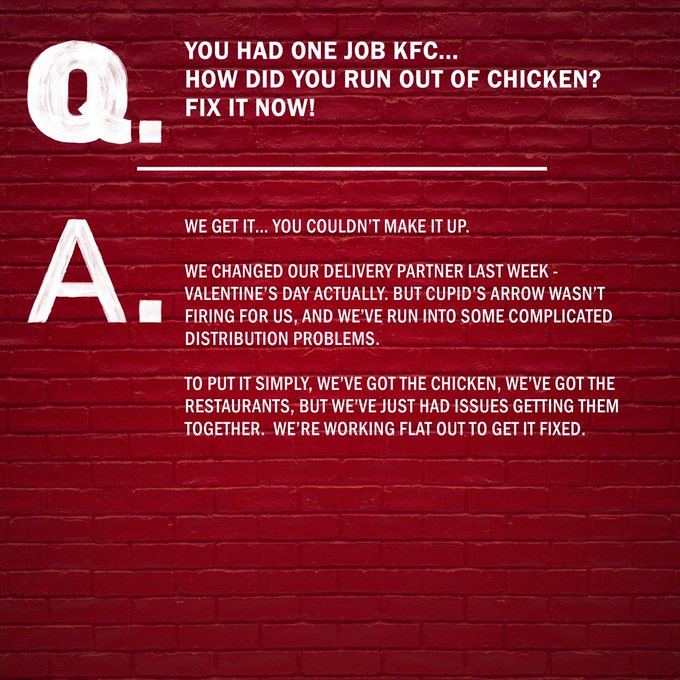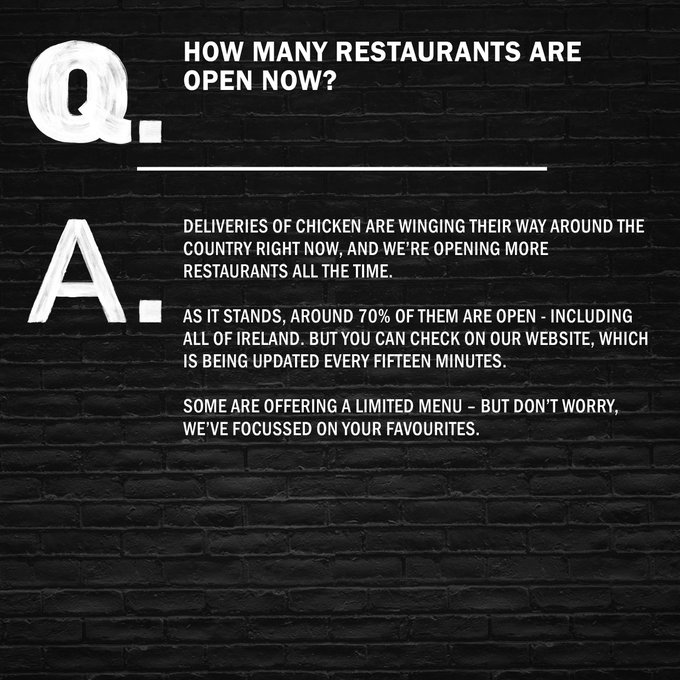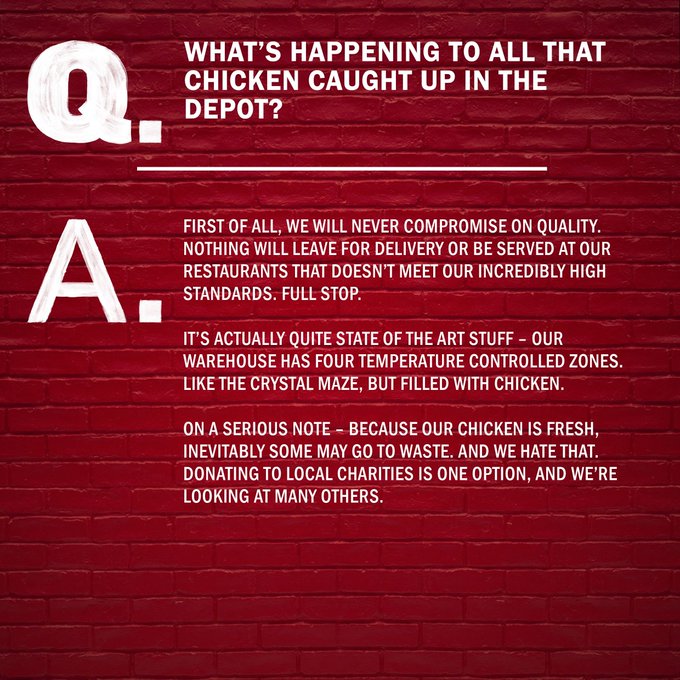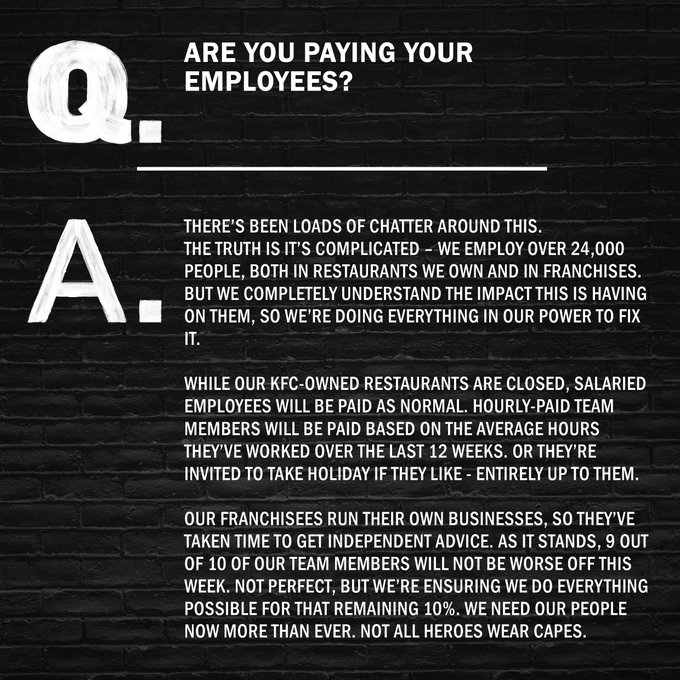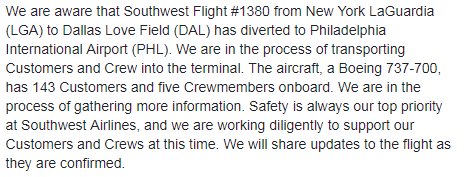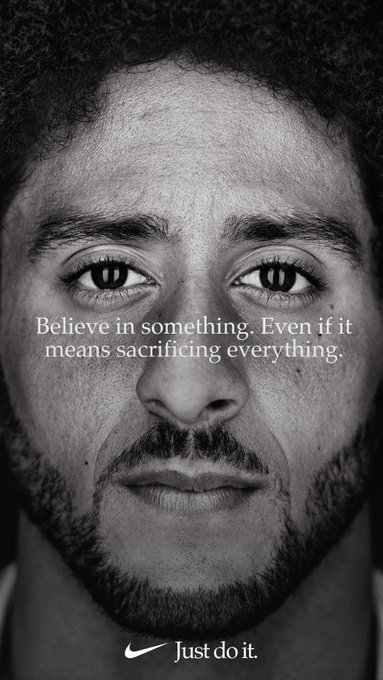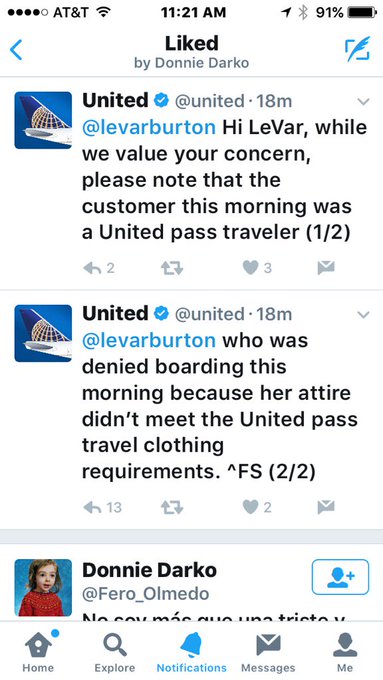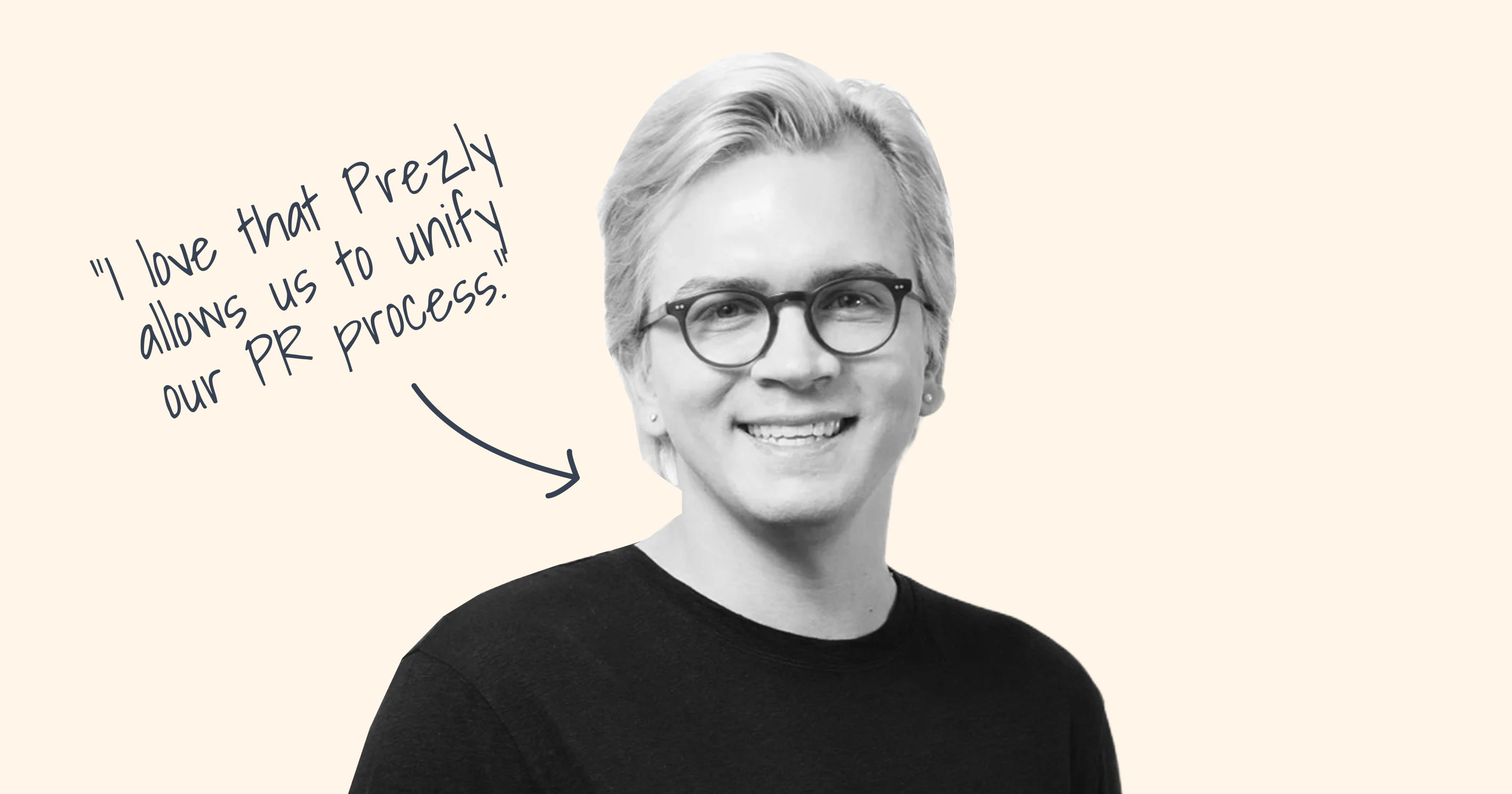7 PR Crisis Management & Communication Examples: The best… and the absolute worst
We take a look at some of the best-managed PR crises of the past decade.
We all like a good rubber-necking at businesses in a PR pickle, but sometimes a company recovers so gracefully that it makes you go, "Bravo!" That's what we're celebrating in this post. There's a lot to be learned from these PR crisis management case studies – and besides, growing from other peoples' mistakes is the best way to avoid having them ourselves.
So, let's have a look at some of the best-managed PR crises of the past decade.
Launch your crisis comms in seconds, not hours
When the proverbial hits the fan, speed is everything. With Prezly, you can set up your emergency contact lists, crisis newsroom and email campaigns well in advance, so you'll be ready for the truly unexpected.

A PR crisis is any unexpected situation that's likely to negatively affect public sentiment around your brand or business. Examples of a PR crisis include: a bad customer experience going viral on social media; an employee or other brand representative is seen to be behaving inappropriately or contrary to your brand values; a major disruption in the operation of your organization, resulting in a bad experience for your customers and the public; and so on. Similar to reactive PR, but specifically related to when things go bad!
Crisis comms and management is the strategic dissemination of information during times of crisis. It normally involves using multiple communication channels and technology to keep all your different stakeholders informed and make the best of a bad situation.
Crisis comms includes things like:
- Public statements
- Crisis newsrooms
- Social media
- Press releases
- Relief efforts
- Direct 1–1 communication with stakeholders
The aim of all crisis comms is to share accurate, timely, and relevant information with the public while mitigating the fallout on the reputation of the brand, organization, or person concerned.
When the proverbial hits the fan, public relations is put to the test. Most people do a mediocre job and, in an attempt not to make a bad situation worse, end up stalling or not committing to a clear and direct response. That's most people.
Then there are the crisis comms superstars.
Here are six examples of brands that met their crisis head on, and responded appropriately, candidly, and in the best possible format.
These are the brands we need to learn from.
What happened?
In the summer of 2024, the whole world learned about California Pizza Kitchen when a video from a dissatisfied customer went viral on TikTok.
It wasn't just that the customer hadn't received the order they wanted – a mac'n'cheese with the mac included – it was that when they called CPK to complain, the person representing the business insisted that the cheese-only order was correct, which was so obviously ridiculous that the video spread like wildfire.
It was a nightmare situation for a B2C brand.
Here's the original TikTok that sparked the flame:
How did the company react?
Instead of just issuing a boring apology or corporate press release, CPK met the criticism on its home turf: TikTok. And it did so with such on-point execution that the world fell in love with Chef Paul and, by extension, CPK. Watch it below:
And CPK didn't stop there. As well as their public response to what happened, they surprised the customer that had kicked off the whole situation with free mac'n'cheese and pizza for a year!
Why was this a great crisis comms response?
Because it read the room and hit all the right notes for its audience:
- Fast
- Fun
- (Right) Format!
Kudos to CPK for reading the room and turning this around with personality, AND on the platform where it went viral, rather than spending a week crafting an airtight media press release.

KFC is a loveable brand. Following them on Twitter is a treat in and of itself. So when they were faced with a truly embarrassing situation, the PR world got a crash course through this PR crisis management case study.
What happened?
They ran out of chicken in the majority of their 870 UK & Ireland restaurants after an unfortunate series of events led to delivery delays from their warehouses.
How did the company react?
Their PR and marketing team got to work immediately.
They rolled out brilliant ads in newspapers with the KFC letters rearranged on the bucket to own their FCK up. They maintained a page on their website where customers could check the chicken status of their local restaurants. And they kept on top of the news by answering questions via social media almost daily.
There's gossip in the hen house, here's the facts...
Why was this a great crisis comms response?
This is a great example of crisis comms because the way that KFC reacted completely reflected their brand values. They did everything transparently, swiftly, and true to their brand voice, which made everyone put away their torches and celebrate their favorite fast food giant's humility.
Use Prezly's free trial to set up your crisis comms room and prepare your contact lists →
The coffee chain giant has had its own share of crises from the controversies around the Christmas cup designs it rolls out each year to their failed Race Together campaign. This time the topic of racism reared its ugly head yet again.
What happened?
Two men, Rashon Nelson and Donte Robinson, were arrested after a Starbucks staff member called the cops on them while they were waiting for a friend.
How did the company react?
A clear-cut case of racial discrimination could have been brushed off by Starbucks as a problem with the one employee, an "isolated incident", but instead, Starbucks chose to do something different. In an interview, Starbucks CEO Kevin Johnson didn't mince words regarding his position on the matter:
The fact that what happened in our store last Thursday and the outcome from that incident was reprehensible. That should not have happened, it was wrong, and my role and responsibility as CEO is to learn, to understand it and fix it.
– Starbucks CEO Kevin Johnson in an interview for The Inquirer
But what really made the difference is that Johnson wasn't just talking the talk.
What happened next was that Starbucks closed down 8,000 stores across the United States for Racial Bias Training. While not all the employees who participated thought it was executed to the best of its ability (especially people of color who felt it was, at times, weak), it still made a statement that Starbucks was willing to make a cultural change within their staff to combat the biases that led to the incident.
It is estimated that Starbucks lost around $12 million in profit during the time the stores were shut down, but taking the hit was an important step towards mending its relationship with the public.
Why was this a great crisis comms response?
Because the company followed up talk with action. While Starbucks still has a long way to go when it comes to talking about race, if they keep supporting initiatives within the company to chip away at prejudice, then this will be a long-term success. If they don't, we might look back and say, "What an expensive band-aid."
Southwest Airlines is one of those brands that people love. Their service is good, their staff are friendly, and their flights are cheap. On top of that, they were rated the safest airline in the world – that is, until April 2018.
What happened?
On April 17, 2018, Flight 1380 took off from LaGuardia airport in New York, but ended up having to make an emergency landing in Philadelphia after an engine exploded and ripped open the fuselage, killing one person. Other passengers were able to record footage of their experience, bringing the raw fear of being in trouble in the air to those on the ground.
Update on Flight #1380:
How did the company react?
First and foremost, further crisis was averted thanks to the crew on the airplane, which in the end landed safely without any other fatalities or serious injuries. While that was happening, CEO Gary Kelly and his team got to work.
They made sure that passengers in Philadelphia had everything they needed, including travel and accommodation arrangements, trauma counseling, and other actual support to make sure that an investigation into the incident could get started immediately.
Southwest staff had clear guidelines and checklists that allowed them to carry out the crisis response without anything slipping through the cracks. In the two days following the fatality, Southwest did some amazing work:
- Kelly made a heartfelt, but concise, statement to the passengers and their families
- They pulled advertising from social media
- Passengers who stayed in Philadelphia were reminded with notes slipped under their doors that support was available 24/7
- All passengers received personal phone calls and emails offering support and counseling resources
- Passengers were also sent $5,000 with no strings attached to help "ease the burden" of the situation
- They were also sent a $1,000 Southwest travel voucher
- Southwest's social media team kept extra tabs online for real-time information to find out exactly what people were saying, posting, and expressing following the incident
Why was this a great crisis comms response?
Because it didn't beat around the bush, and combined effective messaging and action in a coordinated action plan. All in all, they did an excellent job of focusing their efforts on the affected passengers, while at the same time managing the media and the investigation.
As PR Daily put it so perfectly:
When The New York Times follows a disaster with the headline “Southwest pilot of Flight 1380 is Navy veteran hailed for her ‘nerves of steel'", you know you got your messaging right.

Or, what to do with all those lemons.
If you didn't know anything about what was going on in the United States, or don't necessarily care about American football, you would watch this ad and think it was inspiring and motivating.
But that's not what happened.
But let's be clear, this isn't an unintended PR crisis, this is a planned controversy. I still believe it does well to be on this list because the reactions were so strong, yet Kaepernick and Nike both pulled through, and it's a great example of starting a conversation around your brand values.
How did the company react?
In 2016, Colin Kaepernick, quarterback of the San Francisco 49ers, sat on the bench during the National Anthem (during a pre-season game) to protest police brutality. From there, other players joined in and sparked a country-wide debate about race and politics in sports. Kaepernick ended up unemployed and embroiled in controversy, holding fast to his beliefs.
Two years later, in 2018, Nike, one of the main clothing sponsors of the NFL, has him star in the powerful ad campaign you saw above. It was the 30th anniversary of their "Just Do It" campaign. The slogan of the new campaign? "Believe in something. Even if it means sacrificing everything."
Believe in something, even if it means sacrificing everything. #JustDoIt
And then the shit hit the intentionally placed fan.
Nike's stock fell by 3%. People apparently started cutting out the Nike logo from their clothes or burning them. People boycotted. News outlets had a field day reporting on it, and doing opinion pieces. Here are just a few of the headlines from the launch of the campaign:
- City mayor bans Nike products from booster clubs, according to leaked memo (USA Today)
- Mississippi State Police Agency Will No Longer Buy Nike Over Kaepernick Campaign (Huffington Post)
- Nike share price wiped out in extreme reaction to Colin Kaepernick campaign (news.com.au)
- Trump: Nike sent a "terrible message" with Kaepernick ad (CNBC)
How did the company react?
Kaepernick and Nike did not apologize and were steadfast in their execution of the campaign. In this case the best course of action was to ignore the haters and keep their heads high – something I'm sure they anticipated well in the planning stages of the campaign.
And after the dust cleared? It turned out that sales had increased by 31% with stocks closing at an all time high. And while there were a lot of people up in arms about the ad, it did really well with people aged 18 to 34.
Why was this a great crisis comms response?
In this case, it was as simple as staying strong with undoubtedly a solid crisis communication strategy that allowed Nike to weigh up the options and anticipate the drama. Solid preparation and then sticking to the plan meant that in the end, Nike came out on top.
As Forbes so eloquently put it:
The Tide Pod Challenge was about as unexpected as it gets, as no one in their right mind could have predicted that teens would suddenly decide eating Tide Pods was a fun way to pass the time.
What happened?
Teenagers started eating Tide Pods and filming it as part of the Tide Pod Challenge. Because that's the world we live in.
How did the company react?
Planning for the unexpected, like the real black-sheep unexpected, is next to impossible. However, Tide's parent company, Procter & Gamble, had a crisis plan and was able to deal with this situation as gracefully as one can expect when your initial reaction is, invariably, "Of course it's dangerous, you dumbass."
In fact, they recruited Rob Gronkowski to do that bit for them:
What should Tide PODs be used for? DOING LAUNDRY. Nothing else. Eating a Tide POD is a BAD IDEA, and we asked our friend @robgronkowski to help explain.
In fact, they didn't beat it over the head on social media. The above tweet and this one here are the only ones about the challenge on their official Twitter account:
Only things that should be on today’s menu: nachos, wings and plenty of team spirit. Save your Tide PODS® for the stains later.
I guess they realized quickly that telling teenagers not to do something is an exercise is futility.
They already had warnings and locks on the boxes. There wasn't much else they could do about the product itself. So they focused on getting those warnings out via earned media, just to drive the point home. They also invested in getting the challenge videos removed. In an official statement they said:
Nothing is more important to us than the safety of people who use our products. We are deeply concerned about conversations related to intentional and improper use of liquid laundry pacs and have been working with leading social media networks to remove harmful content that is not consistent with their policies.
YouTube eventually started to pull the videos from the platform. And Procter & Gamble did all they could really do. Now they just have to weather the memes and the jokes for the rest of eternity.
Why was this a great crisis comms response?
Because Tide met the crisis where it was spreading – TikTok. This is a great lesson on tailoring your response to your audience, both in terms of what you say and the format of how you say it.
Good old Crockpot. How did they get themselves in a PR pickle? Well...[SPOILER ALERT]
What happened?
The TV show "This is Us" happened. The NBC series had a mysterious death captivating the audience for the first season, when it was revealed that the death was caused by a house fire sparked by a slow-cooker, Crockpot had to deal with a sudden fear of their product.
How did the company react?
First step? They made a Twitter account. In 2018. And then got to work comforting fans of the show. The Twitter handle is even @CrockPotCares just to sidestep the image of their brand being murderous or cold-hearted.
We’re 💔 over last night’s episode, too! But don’t worry, you can still make your favorite meals in your #CrockPot with confidence. We want to assure all consumers we rigorously test our products for safety. DM us & we’d be happy to tell you more about our safety standards.
Their official statement included a reference to their safety record:
For nearly 50 years with over 100 million Crock-Pots sold, we have never received any consumer complaints similar to the fictional events portrayed in last night’s episode. In fact, the safety and design of our product renders this type of event nearly impossible.
Then NBC stepped in with the assist, making an ad clearing the Crockpots name before the Super Bowl, in which fans were claiming they were going to have Crockpot-free parties.
The reactions from both Crockpot and NBC proved to work, as people did not end up throwing out their Crockpots or storming Crockpot HQ.
Why was this a great crisis comms response?
Because Crockpot and NBC worked together to handle the crisis in a timely way, managing to strike while the fire was hot, if you'll pardon the phrasing.
And now, for the less exemplary examples…
And because we all love to rubberneck, let's end on a cautionary example of how not to do crisis comms. Strong parallels here with "how not to apologize to your spouse".
What happened?
For United Airlines, 2017 was not off to a very good start. One of their staff had prevented two teenage girls from boarding their flight because they were wearing (gasp) leggings.
Of course, because we live in a social media dystopia, another passenger filmed the incident and the story quickly went viral.
1) A @united gate agent isn't letting girls in leggings get on flight from Denver to Minneapolis because spandex is not allowed?
2) She's forcing them to change or put dresses on over leggings or they can't board. Since when does @united police women's clothing?
The story started doing the rounds on social media and media-media, with conversations sparking about sexism and the freedom over our own bodies. Even Hollywood darling and my personal hero LeVar Burton piped up.
Duly noted, @united... Still, the punitive measures taken are not a good look!
The company responded by digging in its heels and explaining to strangers on the internet why it was in fact not wrong to police passengers' clothing, while simultaneously trying to reassure prospective future customers that they wouldn't be accosted for wearing leggings.
Needless to say, it was not a great time for the poor folks in United's PR department.
Little did they know that the shit had not yet hit the fan.
Just a few weeks following the incident, a second blow would throw the company into true crisis mode.
A video appeared clearly showing a passenger being brutally beaten and dragged off a flight. Although initial rumours suggested that the flight had been overbooked and the passenger had been refusing to give up his seat (which somehow would have excused this treatment), it soon became apparent that seats were being reallocated to accommodate United's own employees.
The passenger, Dr Dao, had to be taken to hospital to treat injuries including a broken nose, a concussion and broken teeth.
I know, yikes.
How did the company react?
Fortunately, United's CEO Oscar Munoz had some clear and heartfelt words to share on the incident.
This situation was unfortunately compounded when one of the passengers we politely asked to deplane refused and it became necessary to contact Chicago Aviation Security Officers to help. Our employees followed established procedures for dealing with situations like this.
– Letter from CEO Oscar Munoz to United employees, reported by CNN
Within 24 hours, United had haemorrhaged $800 million in value.
Naturally and, I'm sure, entirely coincidentally, this is where Munoz expressed a change of heart. But as they say, it was too little, too late.
Why was this a bad crisis comms response?
The letter from the CEO was a textbook non-apology – a defensive sorry-not-sorry that the public immediately picked up on, and that made any subsequent attempts at a real apology feel far less genuine.
What happened?
The renaming of Twitter to the extremely awkward "X" is the most enduring part of Musk's rebrand, but in reality, Musk's handling of the platform has been strewn with confusion and controversy from the gecko 🦎
Elon Musk acquired Twitter in 2022 for around $44billion, and over the course of the following year, headlines like this one from Raconteur littered the internet:
What accompanied the rebrand was a slew of questionable decisions around banning and unbanning users, selling verification badges, firing staff, and more, all while the company haemorrhaged users, ad revenue, and status.
Thanks to Musk, Twitter was rapidly turning from a cross-generational social platform that worked for business, personal branding, fun, and trolling, to just catering to the trolls. He might as well have renamed it 5Chan.
How did Elon Musk react?
Confusingly, inconsistently, furiously. Musk doubled down on his choices and trolled his way through some criticism, while completely ignoring the bulk of it and gunning ahead.
Why was this a bad crisis comms response?
Boy, why wasn't it. Although Twitter/X (as it's most commonly referred to these days) has retained a lot of users following the initial exodus to competing platforms like Mastadon and BlueSky, the platform's glory days appear to have well and truly gone down the Xitter.
What happened?
The DevTernity software conference got caught in a weird scandal when it was discovered that one of the female speakers on the agenda wasn’t real – she was literally a computer-generated profile. The conference’s organizer, Eduards Sizovs, admitted to creating the fake speaker but insisted it wasn’t an attempt to cover up the lack of diversity in the lineup.
Naturally, this didn’t sit well with some, and execs from Microsoft and Amazon bailed on the event. Kristine Howard from AWS pointed out that she was the only real woman speaker, and now suspects other profiles were fake too.
This week in tech diversity 🤔 ** checks notes ** Man makes up women speakers. Yep, you read that right. The organisers of DevTernity conference have allegedly created fake female speaker profiles to boost diversity. High-profile tech execs from Microsoft & AWS have withdrawn
How did DevTernity react?
After getting called out for using a fake, computer-generated speaker, Sizovs kind of shrugged it off. He admitted they used an “auto-generated” woman, but insisted it wasn’t to cover up their lack of diversity. Instead of apologizing, he went on a mini rant on social media, doubling down and refusing to backtrack. Basically, no apologies, no remorse – just a “yeah, we did it, so what?” attitude. Not exactly the best crisis management strategy.
Why was this a bad crisis comms response?
This was a bad crisis comms response because instead of owning up to the mistake or offering an apology, DevTernity’s organizer went full "no regrets" mode. Admitting to using a fake speaker but then refusing to apologize just made everything worse. It looked like they weren’t taking the diversity issue seriously, and doubling down on social media didn’t help.
People expect transparency and accountability, especially when it comes to something as sensitive as inclusion, and instead, they got a defensive attitude. In short: not apologizing + no real explanation = making the whole situation blow up even more.
Prevention is the best cure, so while planning for a dark future that might never come might feel like wasting time that could be better spent, in reality it's the only thing you can do to prepare yourself for a crisis.
In fact, make multiple. Work with the people running the business – not just marketing – to outline all the stakeholders that you will need to be in direct communication with during any sort of crisis, and create those lists in your CRM today, right now, way before you're going to need to use them. (Ideally, use dynamic segments if your PR CRM supports them, since this will automatically keep those lists updated months and years down the line.)
Your stakeholders are likely to include:
- Clients and customers
- Employees
- Investors / the Board
- Key media outlets
- Official regulatory bodies depending on your industry
Write out brief documentation of who these people are, where your crisis contact lists are stored, and the key channels of communication that each group uses.
It's the 21st century, so you probably already have an online newsroom. But do you have a super secret, private crisis newsroom?
Sometimes known as a "darkroom" (not the photography version), a crisis newsroom is a site you set up and populate with all the details you think you might need should the worst occur. This can include things like information on where people can follow your updates in times of crisis, relevant contact details, health and safety information, advice on where to find support – you get the idea.
If you have a darkroom prepped and signed off, you can take it live with a click of a button – super valuable when time and quick response is of the absolute essence.
You can use Prezly to set up a private crisis newsroom – here's how.
You can't predict every crisis that could possibly arise, but you can absolutely make some educated guesses based on your industry. An airline will almost definitely have messaging prepared to address flight delays and meteorological developments; a food business will have copy at the ready in case they need to recall a product or issue a health warning.
Look around at your industry, outline some likely crisis scenarios, and get some generic messaging approved so that when you need to act fast, you won't need to begin from scratch.
Don't forget employees!
When everything's ablaze, it's easy to focus on those outside of the company. In reality, internal comms is absolutely core to crisis communication. Not only will you need to keep those who are keeping the business running from losing their heads, you'll also need to tamp down on any leaks and speculation that could get out to the public. After all, it's likely that employees will have an idea that something's not right, but they won't have the whole picture.
Have clear guidelines on what employees should and should not do in times of crisis – like speaking with the media outside of approved channels, or sharing gossip with their mum – and prepare an internal message that gives people clear guidelines, including details on whom they can turn to for help.
Imagine that you're away on a much-needed holiday when the crisis hits. Who will know where to find all your carefully researched prepwork then?
That's where documentation comes in. Yes, it's boring. But it's necessary, and it will save you and your team hours – and a lot of grey hairs – should disaster rear its ugly head.
Basically you need to create a knowledge base of all the prep work you've done. It doesn't have to be long – in fact, you want it to be as clear and direct as possible. It just needs to give those dealing with a sudden crisis a leg up.
Include things like:
- Who in the company will need to be informed (include emergency contact details)
- Who in the company will be responsible for what part of the process
- Who your stakeholders are and how to reach them (see Tip #1 above)
- How to activate your crisis newsroom
- Where to find any pre-approved messaging
Some crises are impossible to see coming, so regardless of how much you prepare, when it comes to showtime you'll need to think on your feet. Here are a few tips to help you make that lemonade.
Timeliness is everything in times of crisis. If you're seen to be sitting silently on your laurels, even if what you're actually doing is rushing around trying to put out the worst of the actual fire, the public response can be overwhelming. Worse, your silence creates room for others to write your narrative – and often, those others will be people with loud voices and few facts. So say something.
If you need more time to get a statement or official response approved, that shouldn't stop you. Even just saying that your company is aware of the issue, is focusing on mitigating fallout, and will release a statement shortly is enough to show people that you are handling the situation. It also gives you the opportunity to share any details that may be helpful, for example, a link to your crisis newsroom or a channel that you plan to use to share the latest developments (usually social media).
Probably the worst thing you can do in times of crisis is to try to BS your way out of it. People can smell it a mile off, and even if your white lie is intended to calm things down in the short term, before long it will blow up and make things worse, not least because anything you say afterwards will be met with distrust.
So be honest. Be transparent.
That doesn't mean you have to share absolutely everything. In fact, over-explaining in certain areas – for example, very technical sectors – can do more to cause confusion and alarm than if you were to stick to clear, broad facts. Most people don't know the intricacies of how a jet engine works; they just need to know that it does work.
Rarely is a stuffy press release, which has clearly been nit-combed by a team of comms people and the entire legal team, the best, most candid way to respond to a crisis.
We live in a time when news – however accurate – hits social media first and media outlets second. So take a deep breath, examine your crisis, and consider what channel your message needs to go out on first.
In all likelihood, you'll end up using more than one, and it will all depend on who your message is targeting. See the Tide Pods example above – the key audience that needed to be reached was consumers, and particularly the young, dumb consumers hanging out on TikTok, Xitter, and other social media. So Tide Pods met them where they spend time: social media. And their response wasn't to issue a press release, although this would later follow; no, it was to create a short, candid, meme video that would spread their message faster than any headline every could.
Want to avoid becoming a bad crisis communication case study? The best way to handle a crisis is to be prepared. That means having a crisis management plan as well as things like drafted and approved media responses, contact lists, and even crisis newsrooms.
Ideally, you want to have PR tools that will help you cover:
- Communication with employees
- Communication with the media and other stakeholders
- A CRM with all relevant stakeholder contact lists
- Media monitoring integration to track sentiment about your brand
- Crisis newsroom preparation and publication
- Team collaboration across all your company comms
A tool like Prezly lets you set up all of the above, so that when disaster strikes, you're ready to go in minutes, not hours.
Launch your crisis comms in seconds, not hours
When the proverbial hits the fan, speed is everything. With Prezly, you can set up your emergency contact lists, crisis newsroom and email campaigns well in advance, so you'll be ready for the truly unexpected.

Want to avoid getting into your own PR pickle? Sounds like you're after the Only Crisis Communication Plan You Will Ever Need.
Updated from Emma Kobylenski's 2019 article.
Ready to start growing your media reach?
With Prezly you can publish press releases online, and share them directly with journalists. 14-day free trial, no credit card required.

